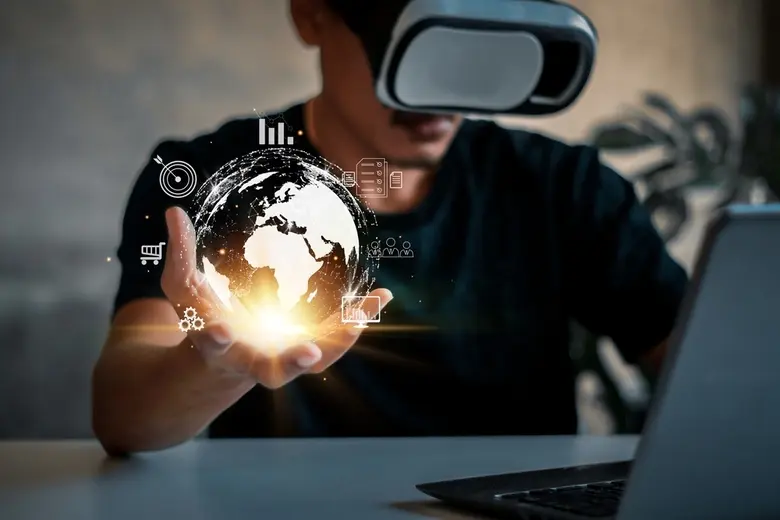Cybersecurity: The great challenge (and the great opportunity) presented by the Metaverse
This budding new virtual world can enhance leisure and business, training and teleworking, production and consumption, but also drive an unprecedented exposure of private life. Either it's safe or it won't happen.
.webp)
Índice de contenido:
Although promising, these steps forward are still isolated experiences. The universal and operational Metaverse has to overcome such serious resistance that it is very risky to predict whether it will reach full maturity, or only an intermediate development. What barriers is it encountering? Interoperability: having this bustling variety of platforms and applications developed by different companies understand each other and converge in a single space, such as the Internet today. It is about agreeing on common protocols and regulations to reach this operational convergence. And there is the need to guarantee another absolutely critical requirement: cybersecurity of goods and people, i.e. the shielding of data as the basis of legal certainty, the trust of users for mass engagement.

Other studies, e.g. by insurance company Lloyd's, agree on these aspects and, in addition, point to other risks derived from the human condition subjected to this degree of immersion. For example, the addiction that can lead to confusing Meta-reality with analogue life. There are no long-term studies on this impact, but today the compulsive use of some technologies (video games, social media, etc.) causes problems that could be extrapolated to the Metaverse. These include the tendency to social isolation or the loss of the sense of reality, like believing that a criminal act in the simulation of a video game does not have the same consequences as in the physical world.
It is not about being alarmist: like any other technology, the concept of Metaverse in principle is neutral; its effects depend on design and use. Controlling its risks, especially security risks, is reportedly the prerequisite to harness its enormous opportunities.
The Metaverse could be defined as a new digital dimension that people access in avatar form to do almost everything they do in the physical world: buy, sell, produce, consume, work, train, play, have fun and socialise, but with an immersive sensory experience. The Metaverse is the technological ability to replicate the physical world through a giant leap in data processing and hyper-connection, so that this alternate reality works smoothly. And it's here that security comes in.

A recent study points out that carrying out increasingly intense activities in such an immersive environment entails "all the cybersecurity problems we have today, albeit multiplied by a thousand. Chief among these potential risks would be an untrained or even careless user, for their own safety or that of their company".
In essence, these are the usual cybersecurity threats, but on a much larger scale. For example, impersonation and account appropriation to have a kidnapped avatar commit fraud such as coin theft. The widespread use of cryptocurrencies in itself implies a need for specialised security services like the physical custody of keys in bunkers with military-grade protection, which Prosegur already offers as a pioneering service.
According to the report, as this technology advances towards the fullness of the Metaverse, or at least towards a constellation of large platforms, we will see a growth of threats such as catphishing (fake profiles), blackmail by doxing (disclosure of private data), the cracks in the large number of physical objects connected to the digital plane (the Metaverse is also a hybrid) and the vulnerability of children and adolescents. This last aspect makes sense: we are talking about a huge social network where interaction is at another level, and which may have possible associated weak points. The same can be said of teleworking or economic relations between companies.
Exposure to risk
In order to understand the development of the Metaverse, you have to think of two time scales: the here and now of tangible progress; and a future full of unknowns.
The list of advances that bring the Metaverse closer is growing exponentially, for example, the huge investments made by the technological giants (Amazon, Google and Facebook, which has changed its name to "Meta"), online videogames (Roblox, Minecraft, Epic Games, etc.), estate agents selling virtual land (e.g. Decentraland), collective teleworking platforms (Accenture, Horizon Workrooms, etc.), and improved versions of interaction devices (visors, gloves, suits, etc.), and augmented, virtual, mixed or assisted realities.
Bill Gates believes that in just three or four years a large part of work meetings could be held on Meta-platforms and, according to the financial multinational Morgan Stanley, marketing and e-commerce functions already have a potential market of 8.300 billion dollars in the USA.
Its great barriers

Interoperability: having this bustling variety of platforms and applications developed by different companies understand each other and converge in a single space, such as the Internet today.



.jpg)
.webp)
%20(2).jpg)